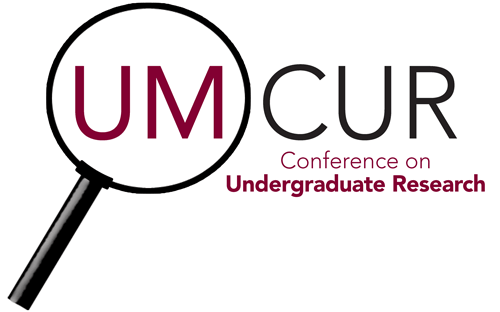
Poster Session #1: UC South Ballroom
Project Type
Poster
Faculty Mentor’s Full Name
Julie Wolter
Faculty Mentor’s Department
Communicative Sciences and Disorders
Abstract / Artist's Statement
Purpose. The purpose of this small feasibility study is to provide data to inform the use of a experimenter-developed task, the Morphological Awareness Semantics Task to examine the vocabulary conceptualization in kindergarten children’s development of morphological (word meaning) in a child-friendly paradigm. Significance. Morphological awareness refers to the smallest linguistic unit of meaning where base words and affixes come together to form new meaning (teach to teacher has a new meaning). There is now good evidence that children rely on morphemes when developing vocabulary and reading (Carlisle & Stone, 2005; Deacon, Whalen, & Kirby, 2011; Wolter, Wood, D'Zatko, 2009). Children’s conceptualizations of morphological representations have rarely been tested which is the aim of the current study. Methods. Kindergarten children listened to sentences that contained word pairs varying in their meaning relatedness and were asked to judge its silliness on a simple rating scale. For example, students were asked to determine whether sentences are “silly” or “make sense” by pointing along a scale of colored smiley faces - given sentences like “If you sing, then you are a singer.” (makes sense); and “You use spin to make spinach.” (silly).Word pairs in the sentences varied in their vocabulary relatedness on a continuum from highly related in morphology and meaning(e.g., bold-boldly), moderately related in morphology and meaning (e.g., late-lately) low related in morphology and meaning (e.g., hard-hardly), related in form or letters only (spin-spinach), and related in semantics or meaning only (e.g. bake-cook). Results. Vocabulary relatedness appears to affect children’s understanding and processing of morphology, but there needs to be further research studied to determine if morphology (A) predicts later literacy success (B) can be harnessed to help children develop morphology in children with and without language and literacy deficits, (C) is different between languages. This was a pilot study and research to investigate these questions is ongoing and part of larger study with partners in the U.S.A., Canada, and France.
Category
Social Sciences
Vocabulary and Morphological Awareness Development in Young Children
UC South Ballroom
Purpose. The purpose of this small feasibility study is to provide data to inform the use of a experimenter-developed task, the Morphological Awareness Semantics Task to examine the vocabulary conceptualization in kindergarten children’s development of morphological (word meaning) in a child-friendly paradigm. Significance. Morphological awareness refers to the smallest linguistic unit of meaning where base words and affixes come together to form new meaning (teach to teacher has a new meaning). There is now good evidence that children rely on morphemes when developing vocabulary and reading (Carlisle & Stone, 2005; Deacon, Whalen, & Kirby, 2011; Wolter, Wood, D'Zatko, 2009). Children’s conceptualizations of morphological representations have rarely been tested which is the aim of the current study. Methods. Kindergarten children listened to sentences that contained word pairs varying in their meaning relatedness and were asked to judge its silliness on a simple rating scale. For example, students were asked to determine whether sentences are “silly” or “make sense” by pointing along a scale of colored smiley faces - given sentences like “If you sing, then you are a singer.” (makes sense); and “You use spin to make spinach.” (silly).Word pairs in the sentences varied in their vocabulary relatedness on a continuum from highly related in morphology and meaning(e.g., bold-boldly), moderately related in morphology and meaning (e.g., late-lately) low related in morphology and meaning (e.g., hard-hardly), related in form or letters only (spin-spinach), and related in semantics or meaning only (e.g. bake-cook). Results. Vocabulary relatedness appears to affect children’s understanding and processing of morphology, but there needs to be further research studied to determine if morphology (A) predicts later literacy success (B) can be harnessed to help children develop morphology in children with and without language and literacy deficits, (C) is different between languages. This was a pilot study and research to investigate these questions is ongoing and part of larger study with partners in the U.S.A., Canada, and France.